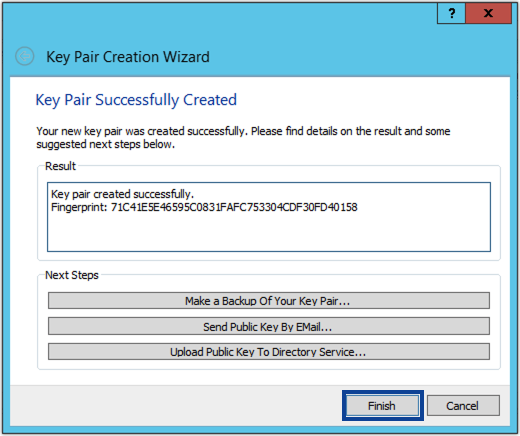Generate Pgp Key Pair Error
- Table of Contents
- Generating a new keypair
- Exchanging keys
- Encrypting and decrypting documents
- Making and verifying signatures
If you are on version 2.1.17 or greater, paste the text below to generate a GPG key pair. $ gpg -full-generate-key; If you are not on version 2.1.17 or greater, the gpg -full-generate-key command doesn't work. Paste the text below and skip to step 6. $ gpg -default-new-key-algo rsa4096 -gen-key; At the prompt, specify the kind of key you. Oct 19, 2017 Dismiss Join GitHub today. GitHub is home to over 40 million developers working together to host and review code, manage projects, and build software together.
GnuPG is a tool for secure communication.This chapter is a quick-start guide that covers the core functionalityof GnuPG.This includes keypair creation, exchanging and verifying keys, encryptingand decrypting documents, and authenticating documents with digitalsignatures.It does not explain in detail the concepts behind public-key cryptography,encryption, and digital signatures.This is covered in Chapter 2.It also does not explain how to use GnuPG wisely.This is covered in Chapters 3 and 4. /windows-10-64-bit-activation-key-generator.html.
GnuPG uses public-key cryptography so that users may communicate securely.In a public-key system, each user has a pair of keys consisting ofa
The command-line option
- If you are on version 2.1.17 or greater, paste the text below to generate a GPG key pair. $ gpg -full-generate-key; If you are not on version 2.1.17 or greater, the gpg -full-generate-key command doesn't work. Paste the text below and skip to step 6. $ gpg -default-new-key-algo rsa4096 -gen-key.
- Use RSA keypair for PGP encryption and decryption. Ask Question Asked 8 years. You can though set the RSA algorithm in PGP on key generation and in PGP Universal as a policy setting. Can I generate multiple PGP key pairs for later use.
- Getting Started. Table of Contents Generating a new keypair Exchanging keys. In a public-key system, each user has a pair of keys consisting of a private key and a public key. A user's private key is kept secret; it need never be revealed. GnuPG is able to create several different types of keypairs, but a primary key must be capable of.
- Tool for PGP Encryption and Decryption. PGP Key Generator Tool. No need to install any software to encrypt and decrypt PGP. PGP Online Encrypt and Decrypt. Tool for PGP Encryption and Decryption. Username / Email Address Choose a password Generate PGP Keys PGP Private Key. PGP Public Key.
- May 28, 2015 This blog describes how to generate a private/public key pair using GPG version 1.4.5. The resulting public key will contain two keys, one key for signing and a subkey for encryption. This key can be used with HCM Fusion SaaS to encrypt/decrypt files as they are transferred to and from the UCM server. User input is noted in RED text.
You must also choose a key size.The size of a DSA key must be between 512 and 1024 bits, and an ElGamalkey may be of any size.GnuPG, however, requires that keys be no smaller than 768 bits.Therefore, if Option 1 was chosen and you choose a keysize larger than1024 bits, the ElGamal key will have the requested size, but the DSAkey will be 1024 bits.
Finally, you must choose an expiration date.If Option 1 was chosen, the expiration date will be used for both theElGamal and DSA keypairs.
Generate Pgp Key Pair Error Codes
You must provide a user ID in addition to the key parameters.The user ID is used to associate the key being created with a realperson.
GnuPG needs a passphrase to protect the primary and subordinate private keys that you keep in your possession.

After your keypair is created you should immediately generate a revocationcertificate for the primary public key using the option
Notes
[1]Option 3 is to generate an ElGamal keypair that isnot usable for making signatures.